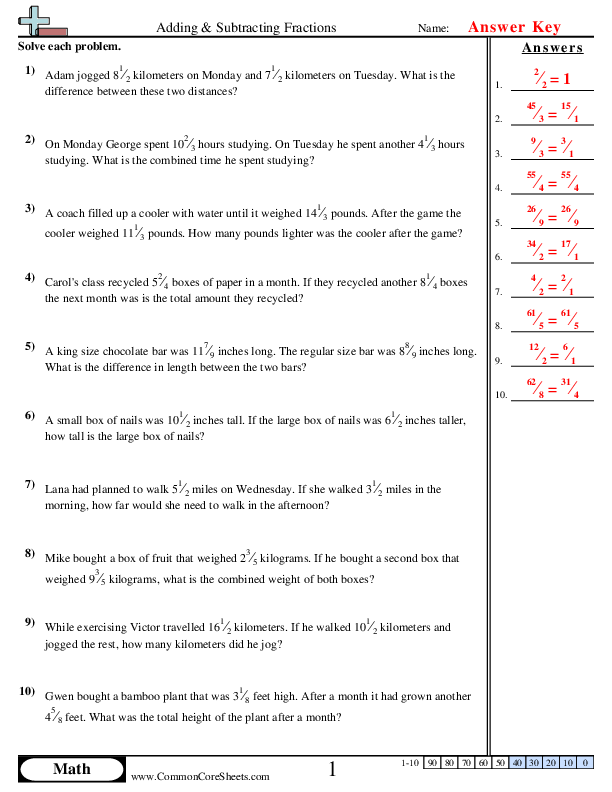Comparing Fractions with Addition & Subtraction
4nf3d


×
Description:
"This worksheet is designed to strengthen children's grasp on comparing fractions. Through a series of 15 math problems, kids will exercise their skills in recognizing larger, smaller, or equal fractions. In a fun, interactive format, they'll also practice addition and subtraction using fractions. The worksheet is fully customizable, making it a versatile tool for in-person or distance learning. There's also an option to convert the problems into flashcards, enhancing the learning process."

×
Student Goals:
Understanding of FractionsAfter completing the worksheet, students should have developed a stronger understanding of fractions. They should have a grasp of the concept that a fraction represents a part of a whole and be able to identify the numerator and the denominator. They should understand what these parts signify, with the numerator indicating the number of selected parts and the denominator reflecting the total number of equal parts in a whole. The worksheet should make students comfortable in navigating the fundamental notion of fractions.Ability to Compare FractionsThe worksheet aims to strengthen the student's ability to evaluate and compare fractions. By solving the problems, students should understand how to discern whether a fraction is larger or smaller than another, recognizing the role of the numerator and the denominator in this process. Comparative signs in the problems should enforce this understanding. It is expected that students will develop their comparative skills with fractions via this worksheet.Fraction Addition and SubtractionA key accomplishment of completing the worksheet is the ability to add and subtract fractions. It should assist students in understanding the procedures of the addition and subtraction operations on fractions. They should be able to accurately add or subtract fractions with the same denominator, a keystone in fraction arithmetic.Problem-Solving SkillsThe worksheet is designed to equip the students with the crucial skill of problem-solving. By working through the problems, students should not only employ their knowledge of fractions but also their logical and analytical abilities. They should be proficient in understanding the problem’s requirements, devising a plan to solve the problem, successfully executing the plan and finally, reviewing the process.Enhancement of Numeracy SkillsAfter completing the worksheet, there should be an overall enhancement of the student's numeracy skills. The exercise of deduction, comparison and calculation involved in these maths problems should bolster the student's proficiency in dealing with numbers and mathematical problem-solving. The worksheet is designed to promote critical thinking and improve numeracy skills.

